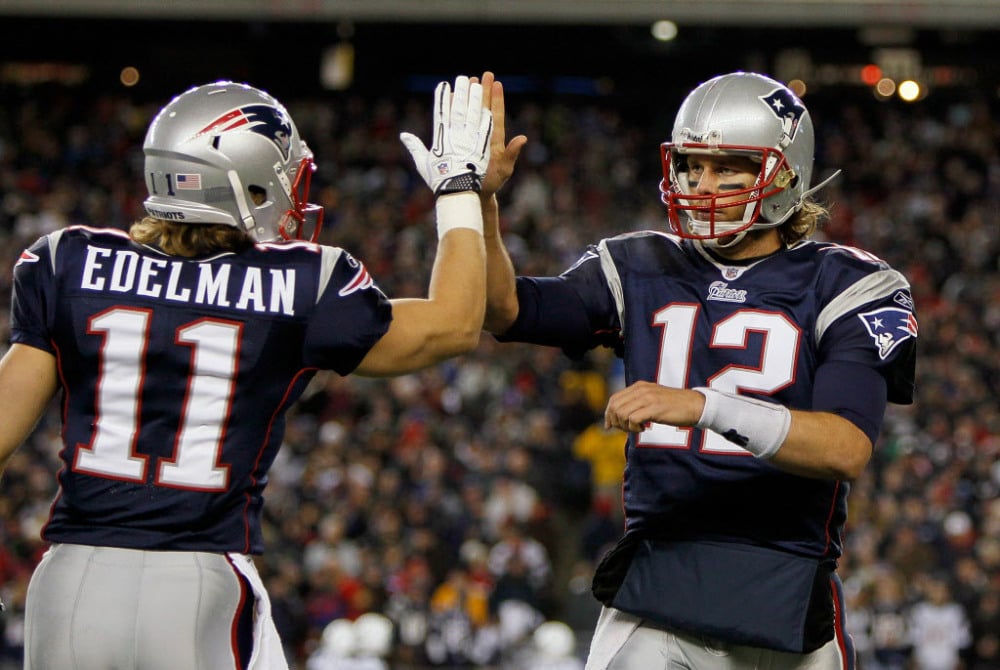Note: This is a guest post from Ian Hartitz.
Welcome to week one of model building! In this intro lesson, I am going to walk through exactly what Bargain Rating is, why you should care about it, and what happens when we heavily weigh a custom Fantasy Labs model with it.
What is Bargain Rating in 50 words or less?
Bargain Rating shows how much of a bargain a player is on one DFS site versus others. The percentage you see for Bargain Rating indicates the percentile rank of a player based on how much of a bargain he is in a specific game when considering historical pricing data across sites.
Could I have an example please?
Currently, Tony Romo has a DraftKings bargain rating of 86%, and a FanDuel bargain rating of 17%. If you decided to play Romo on DraftKings, you would be getting a bargain at quarterback, as his 86% Bargain Rating indicates that he is in the 86th percentile of good bargains for DraftKings. If you decided to play Romo on FanDuel, well, that might not be very smart, because his 17% Bargain Rating indicates that Romo is overpriced on FanDuel relative to historical site pricing differences.
How does this help me win money?
Two key ways.
One: Bargain Rating has a strong correlation with player value (Plus/Minus). Seeing how Plus/Minus helps you project how many points a player is expected to score compared to what their salary projects them to score, this is good company for Bargain Rating to be in.
Two: Bargain Rating is especially useful for those of us who play DFS on both DraftKings and FanDuel. If you really like Mike Wallace one week, but notice he is a much higher bargain on FanDuel versus DraftKings, you can use this knowledge to realize you should get the majority of your exposure to him at the place where he’s cheapest.
Effect on Models
Now that we have a better understanding of what Bargain Rating brings to the table, let’s take a look at how it impacts our DFS choices and models. I am going to use Jonathan Bales’ “Bales’ Model” as my starting point, and will use the point allocations below to create a heavily weighted Bargain Rating Model (remember, all points must add up to 100). The point here isn’t so much creating a great, actionable model, but rather it is to see the effect that heavily weighting Bargain Rating has on the model.
Bargain Rating Model
Bargain Rating = 50 points
Vegas Score, Defensive Unit Rating, Projected Points Per Dollar, Median Projection, Projected Plus/Minus, Pro Trends Rating, Plus Minus, Month Salary Change, Consistency, and Upside = 5 points
– Overall, wide receiver and tight end remained fairly similar, with three out of the top five players being the same for both models for each position.
– The Bargain Rating model produced more scrubs than Bales’ Model, as obvious no-starts like Jermaine Gresham and Robert Woods managed to crack the top five despite their low projected point totals.
– Neither model had a preference for high-priced, high-projected running backs, with the Bargain Rating model favoring higher floor players with pass-catching ability, such as Danny Woodhead and Giovani Bernard.
– Overall, as we should have expected, the biggest consistency with the Bargain Rating model was just that: Bargain Rating. The lowest Bargain Rating for any of the top five players was 78% (on DraftKings).
So there you have it. Bargain Rating is a great tool, but as we have seen, not necessarily one that you want to build your entire model around. The most actionable use of the Bargain Rating tool is for those of you who often play on multiple DFS sites, as you can more accurately determine which players are being over or under priced by certain sites, or at the very least, where to get exposure if you know you’re going to play certain guys.






